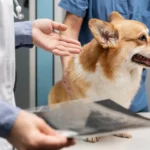
Contents
Accidents are a part of life, but when your pet is involved in one, every second counts. Whether it’s an injury from a fall, a car accident, or a serious pet injury from a fight, knowing how to handle the situation before reaching the emergency vet is crucial. Your quick actions can make the difference in stabilizing your pet and getting them the care they need in time.
Understanding the steps to take can help prevent further injury, manage pain, and reduce the stress of the situation for both you and your pet. This guide will walk you through recognizing pet trauma, what immediate actions to take, and how you can get your pet to emergency veterinary care as quickly as possible.
Recognizing Pet Trauma
When your pet sustains trauma, the symptoms can vary depending on the type of injury. Pet trauma can be as simple as a sprain or as severe as internal bleeding or a fracture. Recognizing the signs quickly is vital, as it helps you decide on the right course of action.
Common signs of pet trauma include:
- Visible wounds: Cuts, abrasions, or punctures, which may cause pet bleeding.
- Limping or immobility: A sign of fractures or joint injuries.
- Labored breathing: Could indicate chest trauma or lung injury.
- Unconsciousness: A sign of head injury or a serious medical issue like shock.
- Shock: Signs include pale gums, rapid heartbeat, shallow breathing, and cool extremities.
If your pet shows any of these symptoms, it’s essential to act immediately to prevent further harm and get them to the emergency vet for treatment.
Immediate First-Aid Steps to Take
When your pet suffers an injury, you must act quickly. While you cannot provide all the necessary care, the immediate steps you take can stabilize your pet and ensure they are ready for the treatment they need at the clinic. Here are the actions to take:
When your pet suffers an injury, you must act quickly. While you cannot provide all the necessary care, the immediate steps you take can stabilize your pet and ensure they are ready for the treatment they need at the clinic. Here are the actions to take:
1. Stay Calm
It’s important to remain calm. Pets can pick up on your anxiety, and your calm demeanor will help them feel more at ease. Try to reassure your pet with gentle words and a comforting tone.
2. Assess the Injury
Carefully check your pet for visible injuries. If you notice pet bleeding, apply pressure using a clean cloth or gauze to stop the flow of blood. If you suspect broken bones or injury, avoid moving the affected limb too much. Stabilize it with a makeshift splint to prevent further damage.
3. Prevent Movement
Moving your pet too much can worsen the injury, especially if there’s a fracture. Unless necessary for transportation, keep your pet as still as possible to avoid aggravating the trauma.
4. Control Shock
Shock is a common response to serious injuries and can worsen your pet’s condition. Symptoms include pale gums, rapid heart rate, and weak breathing. To help manage shock, cover your pet with a blanket to keep them warm and raise their hind legs slightly to improve circulation.
5. Transport Your Pet Safely
If your pet cannot move on their own, carefully transport them to the emergency vet. Use a stretcher or a thick towel to carry them gently, keeping their head and neck aligned. If your pet is conscious and able to walk, guide them calmly to the car for transport.
Getting to the Emergency Vet
When you’re en route to the clinic, it’s essential to move swiftly but safely. Call ahead to let the clinic know that you’re on your way. This will allow them to prepare for your arrival and start making arrangements for treatment.
Make sure you have the following information ready:
- Your pet’s medical history, including any prior injuries, surgeries, or conditions like heart disease, diabetes, or allergies
- Vaccination records or any other relevant documents
- A description of the injury, including the symptoms you’re observing
If possible, take a photo of the injury to show the veterinarian upon arrival. This can help them prepare before they even begin the assessment
What to Expect When You Arrive
Once you arrive at the clinic, the veterinary staff will immediately assess your pet’s condition. Depending on the injury’s severity, your pet may need immediate medical attention, including oxygen therapy, IV fluids, pain management, or surgery.
At our clinic, we provide expert care for a range of trauma-related injuries, including:
- Fracture stabilization: Using advanced techniques to treat broken bones
- Wound management: Cleaning and dressing wounds to prevent infection
- Pain management: Offering effective pain relief to keep your pet comfortable during recovery
What to Expect When You Arrive
Once you arrive at the clinic, the veterinary staff will immediately assess your pet’s condition. Depending on the injury’s severity, your pet may need immediate medical attention, including oxygen therapy, IV fluids, pain management, or surgery.
At our clinic, we provide expert care for a range of trauma-related injuries, including:
- Fracture stabilization: Using advanced techniques to treat broken bones
- Wound management: Cleaning and dressing wounds to prevent infection
- Pain management: Offering effective pain relief to keep your pet comfortable during recovery
Our clinic is fully equipped with diagnostic tools and experienced veterinarians who specialize in treating pet trauma. If your cat or dog has suffered from an injury, we can offer immediate care and help them through the healing process.
Preparing for Future Pet Emergencies
It’s impossible to predict when your pet will suffer an injury, but there are ways you can prepare. Having the right knowledge and tools on hand can help you act quickly if the unexpected happens.
- Create an emergency kit: A basic first-aid kit with bandages, gauze, antiseptic wipes, and a thermometer can help stabilize your pet until they get the care they need
- Know the closest emergency clinic: Always have the contact information for a local emergency vet stored in your phone and ensure you know the quickest route to the clinic
- Be aware of the signs of trauma: The more you know about cat or dog injury and trauma symptoms, the faster you can react to help your pet in an emergency
Conclusion
When your pet experiences trauma, it can be a stressful and overwhelming time. But by staying calm, assessing the injury, and following basic first-aid steps, you can provide vital support to your pet until you reach the emergency vet. Remember that your swift actions can make all the difference in your pet’s recovery.
At North MS Pet Emergency, we specialize in urgent care for pets, providing expert emergency veterinary care when your pet needs it most. Whether it’s a fracture, bleeding wound, or a serious cat or dog injury, we are here to help. Don’t wait—every second counts when it comes to your pet’s health.
Contact Us Now to get immediate help, or visit us for urgent care for pets that need it most.





77Winapps – if there is an app, then this is so much more convenient! Download the app and win!! Here is the link: 77winapps